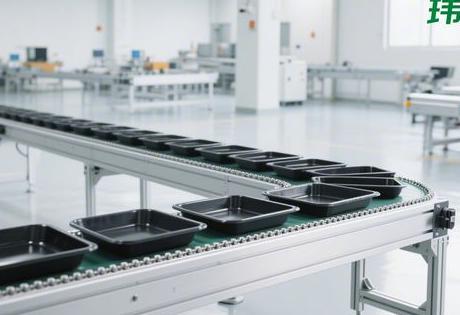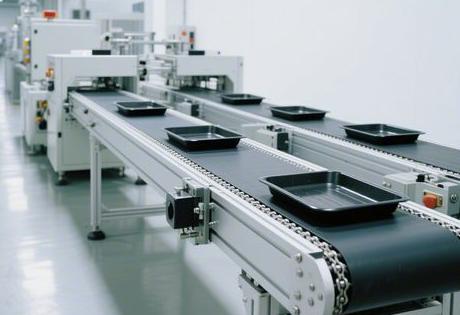## I. Aging Test: A Critical Barrier to Electronic Product Reliability
In the field of electronics manufacturing.Ageing tests are the last line of defence in quality control. By simulating the high-load condition of long-term use, companies can expose potential problems such as component defects and poor soldering in advance. Especially for LEDs, computer motherboards, power supply modules and other precision equipment, more than 72 hours of continuous aging can screen out up to 95% of early failure products.

The traditional single-layer aging line is gradually replaced by the new type due to low space utilisation and high energy consumption.Replaced by a double-layer speed chain structure. This design doubles capacity in the same footprint through vertical space expansion, while optimising temperature distribution using the hot air rise principle to reduce energy consumption by more than 30%.
Second, the core structure of the double-layer speed chain aging line
1. Modular system design
- line structure: Upper and lower independent circulation track, using triple-speed chain drive (chain rotation of a circle, the pallet moves three times the distance of the chain link), to support two-way flow
- mechanical system: Variable frequency motor drive, realising 0.5-3m/min stepless speed regulation.
- positioning mechanism: Pneumatic stopper with photoelectric sensor, error control within ±0.5mm
- Lifting device: Hydraulic lifting platforms for floor-to-floor changeover, with load capacities up to 500 kg.
- control system: PLC-based central controller with integrated HMI
2. Intelligent workflow
- loading area: Manual / robotic arm placement of products to carrier trays
- hierarchical transport: PLC assigns pallets to upper or lower levels according to a preset programme
- Power-on aging: Continuous loading of the product with a rated voltage of 1201 TP3T by the self-powered rail system
- Parameter monitoring: Temperature sensors collect data from each point in real time, triggering alarms in case of anomalies
- automatic sorting: Qualified products flow into the packaging area, faulty products into the return channel
III. Technological Breakthrough Points and Industry Value
### ▶ Space efficiency revolution
Double layer structure makes the production line density enhancement 80%, especially suitable for Shenzhen and other high land cost manufacturing base. A LED enterprise case shows that after the transformation of the number of aging products in a single day from 2,000 pieces to 4,200 pieces, plant rent cost sharing reduced by 55%.
▶ Dynamic Load Balancing
PLC system can intelligently allocate the pallet path according to the real-time load condition. When the upper tier is full, it automatically switches to the lower tier for conveying, avoiding blocking of workstations. This dynamic scheduling increases the overall equipment efficiency (OEE) to 89%, far exceeding the 72% of a single-tier line.
▶ Ergonomic optimisation
- Height-adjustable operating table to accommodate employees of different heights.
- Noise control below 65dB (15dB lower than conventional line body)
- Emergency brake buttons every 5 metres along the track
- Hot air recovery system reduces exposure to high temperatures in the work area
Fourth, the depth of multi-industry application scenarios to adapt
| sector | Application Cases | Benefits Enhancement |
|---|---|---|
| LED manufacturing | Lamp beads 72 hours continuous light decay test | Early fault detection rate 98.2% |
| automotive electronics | ECU controller high temperature aging | After-sales return rate down 40% |
| server (computer) | Full load aging of power modules | Customer returns reduced to 0.3% |
| medical equipment | Accelerated ageing of ventilator motherboards at 168 hours | Increased success rate through FDA approval 35% |
(Source: Shenzhen Chaojin Industrial Equipment Measurement Report)
V. Future direction of evolution: green and smart integration
digital twinIt is changing the mode of aging test. By building a virtual production line model, engineers can predict the aging effect under different parameters in the cloud, and the actual debugging time is shortened by 70%. After an enterprise adopted this technology, the cycle time for introducing new products into the production line was compressed from 14 days to 4 days.
energy cycleBecome a new trend. The latest model integrates waste heat recovery device, which converts heat energy generated from the aging process into HVAC power, reducing the comprehensive energy consumption of each batch of products by 18kWh. According to the industrial electricity price in Shenzhen, the annual saving of electricity cost for a single line is over RMB 150,000 yuan.
AI defect prediction modelThe introduction of the system realises the leap from "after-the-fact detection" to "before-the-fact prevention". By analysing historical aging data, the system can warn potential failure points 48 hours in advance, avoiding batch quality accidents.
VI. Self-questioning: analysis of core industry issues
Q1:Why must the LED industry adopt aging test?
Because the light decay curve of LED chip is non-linear characteristics, the first 100 hours of use determines its 70% life cycle. Through accelerated aging can be screened out early failure products, to avoid the huge cost caused by outdoor lamps and lanterns high altitude maintenance.
Q2: What is the core difference between multiplier chains and traditional conveyor belts?
The "differential speed principle" of the triple speed chain allows the carrier pallet to move faster than the chain itself, ensuring high conveying efficiency while avoiding the risk of vibration associated with high speed drives. This feature is particularly suitable for the aging transport of precision circuit boards.
Q3:How to evaluate the performance of the equipment when enterprises purchase?
Three parameters need to be focussed on:
- Temperature uniformity (good quality within ±1.5°C)
- Track repeatability (should be ≤0.8mm)
- Failure recovery time (excellent system with automatic error correction)
Q4: What is the key point of maintenance?
Required every 400 hours of operation:
- Chain tension test (standard deflection ≤2%)
- Conductive Carbon Brush Replacement
- Track Level Calibration
Neglecting maintenance will lead to a monthly increase of 15% or more in pallet jamming rates













